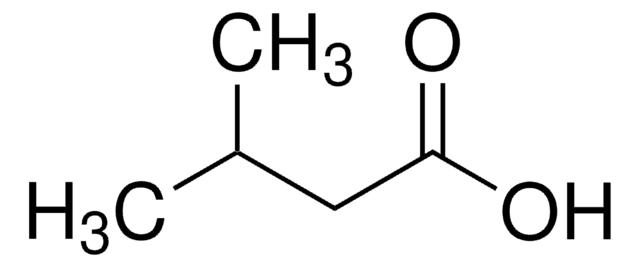109797
Propionic acid
99%
Sinonimo/i:
Acid C3, Propanoic acid, Propanyl acid
About This Item
Prodotti consigliati
Densità del vapore
2.55 (vs air)
Tensione di vapore
2.4 mmHg ( 20 °C)
Saggio
99%
Forma fisica
liquid
Temp. autoaccensione
955 °F
Limite di esplosione
12.1 %
Indice di rifrazione
n20/D 1.386 (lit.)
P. eboll.
141 °C (lit.)
141 °C
Punto di fusione
−24-−23 °C (lit.)
Densità
0.993 g/mL at 25 °C (lit.)
Stringa SMILE
CCC(O)=O
InChI
1S/C3H6O2/c1-2-3(4)5/h2H2,1H3,(H,4,5)
XBDQKXXYIPTUBI-UHFFFAOYSA-N
Cerchi prodotti simili? Visita Guida al confronto tra prodotti
Avvertenze
Danger
Indicazioni di pericolo
Consigli di prudenza
Classi di pericolo
Eye Dam. 1 - Flam. Liq. 3 - Skin Corr. 1B - STOT SE 3
Organi bersaglio
Respiratory system
Codice della classe di stoccaggio
3 - Flammable liquids
Classe di pericolosità dell'acqua (WGK)
WGK 1
Punto d’infiammabilità (°F)
129.2 °F - closed cup
Punto d’infiammabilità (°C)
54 °C - closed cup
Scegli una delle versioni più recenti:
Possiedi già questo prodotto?
I documenti relativi ai prodotti acquistati recentemente sono disponibili nell’Archivio dei documenti.
I clienti hanno visto anche
Il team dei nostri ricercatori vanta grande esperienza in tutte le aree della ricerca quali Life Science, scienza dei materiali, sintesi chimica, cromatografia, discipline analitiche, ecc..
Contatta l'Assistenza Tecnica.














